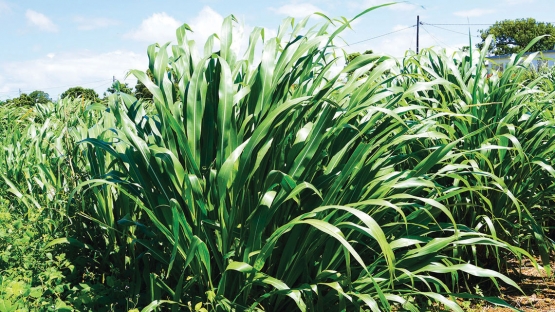Mauritius, one of the world’s top luxury tourism destinations, possesses one of the world’s most pristine environments and is free from major tropical animal diseases. It also has had a continuous increase in demand, from both tourists and locals, for locally produced milk and meat. Yet, despite having all of these drivers, domestic food production has been confronted by the high price of imported concentrated feeds, and the island must depend on the import of milk and meat. The Joint FAO/IAEA Division has been assisting Mauritius in increasing its research capacities to render its dairy and meat industries competitive through producing feed locally, utilizing by-products and residues of the sugar industry and also using land that has become available due to the decline in sugar cane production.
Mauritius is an island nation in the Indian Ocean with an area of 2 040 kilometres squared. Its upper middle income economy, with per capita income of over US $15 591 in 2012, is one of the largest in Africa. The growth of its tourism industry, backed by well-designed and run hotels, has brought with it a rapidly increasing demand for milk and meat produced in Mauritius. There has also been an increased demand from domestic consumers for home-grown animal products. Yet, in spite of the fact that it possesses one of the cleanest environments in the world and is free from major tropical animal diseases, Mauritius still depends heavily on the import of milk and meat. This is mainly due to the high price of imported concentrated feeds, which limits domestic production.
Since the beginning of the 1990s, the Joint FAO/IAEA Division has worked with the Food and Agricultural Research and Extension Institute (FAREI) to assist Mauritius in building its research capacities to address animal nutrition and reproduction issues and, in turn, improve productivity. With this support, Mauritius now envisions having vibrant private dairy and beef industries based on using by-products and residues of the sugar industry and also using land freed from sugar cane production for feed production.
The Joint Division’s work with FAREI included developing a repository of fodder germplasm through selective breeding of indigenous grasses and incorporation of tropical forages from elsewhere. In addition to abundant sugar cane tops, which can be collected and used as animal feed, as many as 18 fodder germplasms were identified and collected. In addition, through work with FAREI, forage agronomy was developed or optimized by analysing individual fodders to determine their nutrients and chemical compositions. The information on fodder production and conservation, nutritive values of various fodders and their uses in animal feeding were summarized and disseminated among farmers. Also a fodder calendar was developed based on the availability of various fodders throughout the year.




